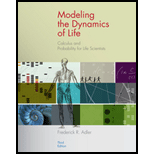
a.
To check the identity
At
a.
Answer to Problem 26E
The given identity is true at
Explanation of Solution
Given:
Concept Used:
Calculation:
To check the identity
Put
And;
This, implies that left hand side and right hand side of given identity are true for
Hence, the given identity is true at
b.
To check the identity
At
b.
Answer to Problem 26E
The given identity is true at
Explanation of Solution
Given:
Concept Used:
Calculation:
To check the identity
Put
And;
This, implies that left hand side and right hand side of given identity are true for
Hence, the given identity is true at
c.
To check the identity
At
c.
Answer to Problem 26E
The given identity is true at
Explanation of Solution
Given:
Concept Used:
Calculation:
To check the identity
Put
And;
This, implies that left hand side and right hand side of given identity are true for
Hence, the given identity is true at
d.
To check the identity
At
d.
Answer to Problem 26E
The given identity is true at
Explanation of Solution
Given:
Concept Used:
Calculation:
To check the identity
Put
And;
This, implies that left hand side and right hand side of given identity are true for
Hence, the given identity is true at
Want to see more full solutions like this?
Chapter 1 Solutions
Modeling the Dynamics of Life: Calculus and Probability for Life Scientists
- Use the conditions tanx=13 and cosx0 to find the values of all six trigonometric functions.arrow_forwardUse the reciprocal identities for the following problems. If tan=a(a0), find cot.arrow_forwardIf cos=35 with in QIV, find the values of the remaining five trigonometric functions for .arrow_forward
- Let be an acute angle such that cos =0.96. Find the value of (a) sin and (b) tan using trigonometric identities.arrow_forwardGiven cot=x for some value x. Which of the following correctly shows how to use a calculator to approximate ? a. tan1(1/x) b. 1/tan1(x) c. cos(x)/sin(x) d. cos1(x)/sin1(x)arrow_forward
 Mathematics For Machine TechnologyAdvanced MathISBN:9781337798310Author:Peterson, John.Publisher:Cengage Learning,
Mathematics For Machine TechnologyAdvanced MathISBN:9781337798310Author:Peterson, John.Publisher:Cengage Learning, Trigonometry (MindTap Course List)TrigonometryISBN:9781337278461Author:Ron LarsonPublisher:Cengage LearningAlgebra & Trigonometry with Analytic GeometryAlgebraISBN:9781133382119Author:SwokowskiPublisher:Cengage
Trigonometry (MindTap Course List)TrigonometryISBN:9781337278461Author:Ron LarsonPublisher:Cengage LearningAlgebra & Trigonometry with Analytic GeometryAlgebraISBN:9781133382119Author:SwokowskiPublisher:Cengage Algebra and Trigonometry (MindTap Course List)AlgebraISBN:9781305071742Author:James Stewart, Lothar Redlin, Saleem WatsonPublisher:Cengage Learning
Algebra and Trigonometry (MindTap Course List)AlgebraISBN:9781305071742Author:James Stewart, Lothar Redlin, Saleem WatsonPublisher:Cengage Learning Trigonometry (MindTap Course List)TrigonometryISBN:9781305652224Author:Charles P. McKeague, Mark D. TurnerPublisher:Cengage Learning
Trigonometry (MindTap Course List)TrigonometryISBN:9781305652224Author:Charles P. McKeague, Mark D. TurnerPublisher:Cengage Learning




